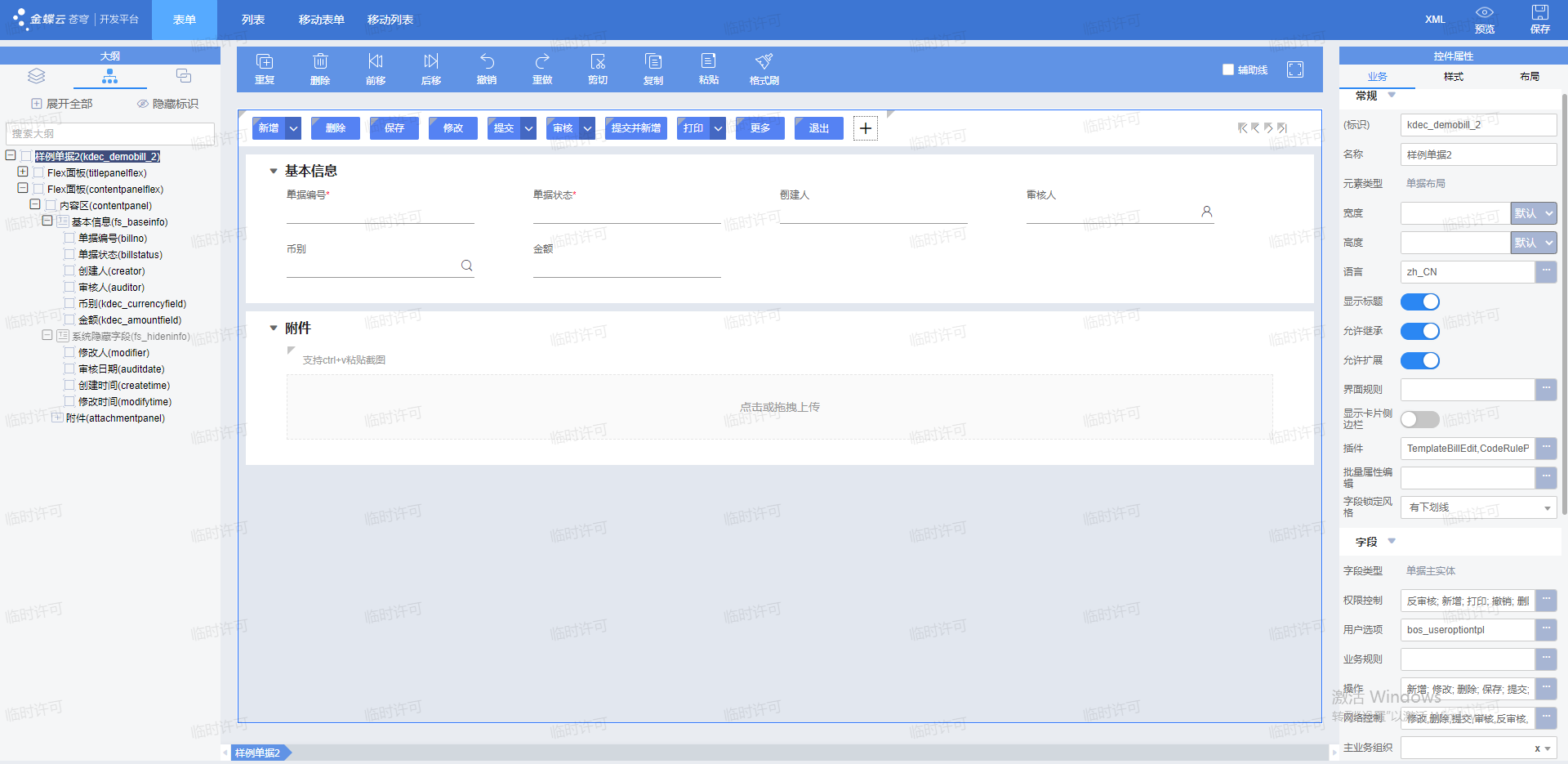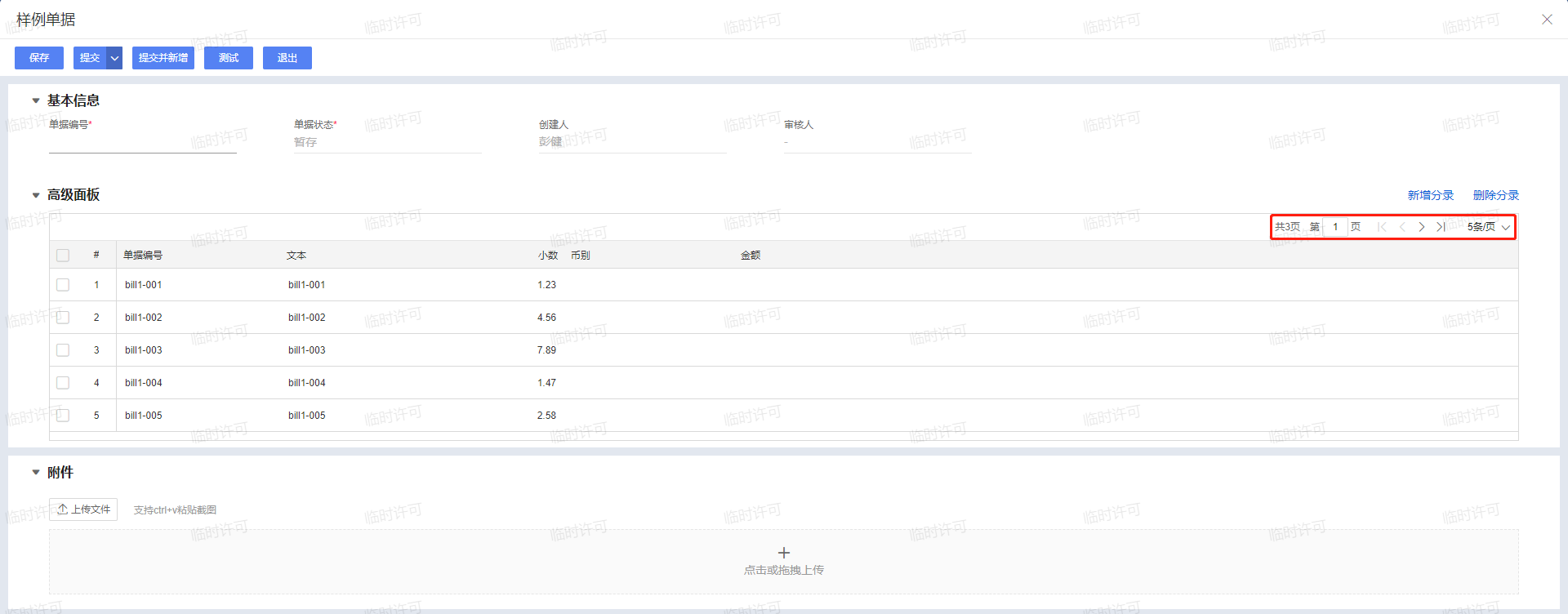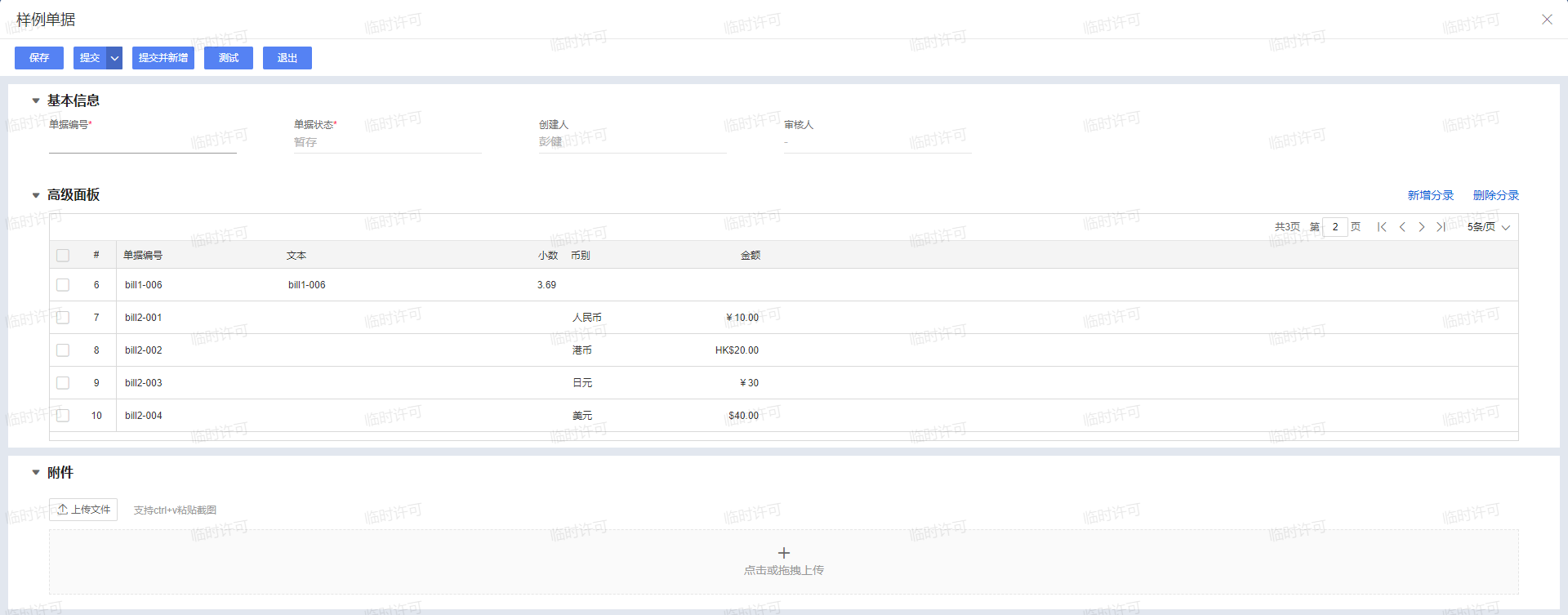本文档描述了一个关于单据数据合并展示的技术实现方案。具体为将两个单据(kdec_demobill_1和kdec_demobill_2)的头数据合并后,展示在第三个单据(kdec_demobill)的单据体中。通过注册插件并监听单据体控件的数据绑定事件,重写相关方法来实现数据的重新取数和分页展示。文中详细说明了实现过程,包括新建单据、注册插件、重写entryGridBindData方法以及实现单据体数据填充的逻辑。最后,还提供了效果图和注意事项,并建议参考开发平台的学习资料来进一步理解标准单据体的使用。
关键词:单据体
一、需求
将单据1(kdec_demobill_1) & 单据2(kdec_demobill_2)的单据头数据合并展示到单据(kdec_demobill)的单据体中。
二、思路与方案
单据体表格本身提供绑定数据事件,且支持按分页绑定,故我们可在页面插件中对单据体控件添加监听:addDataBindListener ,然后重写 entryGridBindData 方法即可。
三、实现过程
1. 新建单据,其设计器界面分别如下图所示。
样例单据:kdec_demobill,单据体分页展示,每页5条。

样例单据1:kdec_demobill_1,放置文本 & 小数控件即可。

样例单据2:kdec_demobill_2,放置币别 & 金额控件即可。

2. 在样例单据(kdec_demobill)上注册插件实现业务功能:对单据体控件添加监听,再重写 entryGridBindData 方法实现单据体重新取数逻辑。
@Override
public void initialize() {
super.initialize();
EntryGrid entryGrid = this.getView().getControl(KEY_ENTRYENTITY);
entryGrid.addDataBindListener(this);
}
/**
* 单据体表格绑定数据事件, 按分页绑定
*/
@Override
public void entryGridBindData(EntryGridBindDataEvent e) {
EntryGridBindDataListener.super.entryGridBindData(e);
this.custEntryGridBindData(e);
}
/**
* 单据体填充自定义数据
* @param e
*/
private void custEntryGridBindData(EntryGridBindDataEvent e) {
// 获取表格的状态对象
EntryGrid grid = this.getView().getControl(KEY_ENTRYENTITY);
GridState entryState = grid.getEntryState();
// 每页展示的起始记录序号
int startIndex = 0;
// 每页展示的尾记录序号
int endIndex = 0;
// 单据体展示数据的总数
int rowCount = this.getRowCount();
// 总页数
int pageCount = 0;
// 是否分页
Boolean needPaged = grid.isNeedPaged();
if (needPaged) {
pageCount = rowCount / entryState.getPageRows().intValue() + (rowCount % entryState.getPageRows().intValue() > 0 ? 1 : 0);
if (pageCount == 0) {
pageCount = 1;
}
if (entryState.getCurrentPageIndex().intValue() < 1) {
entryState.setCurrentPageIndex(1);
} else if (entryState.getCurrentPageIndex().intValue() > pageCount) {
entryState.setCurrentPageIndex(pageCount);
}
startIndex = (entryState.getCurrentPageIndex().intValue() - 1) * entryState.getPageRows().intValue();
endIndex = Math.min(startIndex + grid.getPageRow(), rowCount);
} else {
endIndex = rowCount;
}
List<RowDataEntity> objs = new ArrayList<RowDataEntity>();
List<Object> rows = new ArrayList<Object>();
// 重新实现kd.bos.form.control.EntryGrid.getEntryDataEntities(int, int)方法以重新绑定数据源
DynamicObject[] dataEntitys = this.getEntryDataEntities(startIndex, endIndex);
if (dataEntitys != null && dataEntitys.length > 0) {
// 单据体数据类型
EntityType entityType = this.getModel().getDataEntityType().getAllEntities().get(KEY_ENTRYENTITY);
for (int rowIndex = 0; rowIndex < (endIndex - startIndex); rowIndex++) {
objs.add(new RowDataEntity(rowIndex + startIndex, dataEntitys[rowIndex]));
}
if (grid.getRuleCount() > 0) {
// 触发分录规则
RuleContainer<FormRuleExecuteContext> ruleContainer = getView().getService(RuleContainer.class);
ruleContainer.raise(new RaiseEventSource(RaiseEventType.Initialized, objs, entityType), new FormRuleExecuteContext(getView()));
}
for (RowDataEntity obj : objs) {
BindingContext bindCtx = new BindingContext(entityType, obj.getDataEntity(), obj.getRowIndex());
rows.add(grid.getRowBindValue(bindCtx));
}
}
e.getData().put("rowcount", rowCount);
e.getData().put("rows", rows);
e.getData().put("pagecount", pageCount);
e.getData().put("datacount", rowCount);
}四、效果图
样例单据1业务数据

样例单据2业务数据

合并展示在样例单据单据体中的数据


五、开发平台版本
不限
六、注意事项
本样例附件中仅含样例源码,页面较简单,请自行新建,然后注册插件,重启服务即可复现样例效果。
七、参考资料
标准单据体控件填充自定义数据.zip(3.01KB)
推荐阅读

